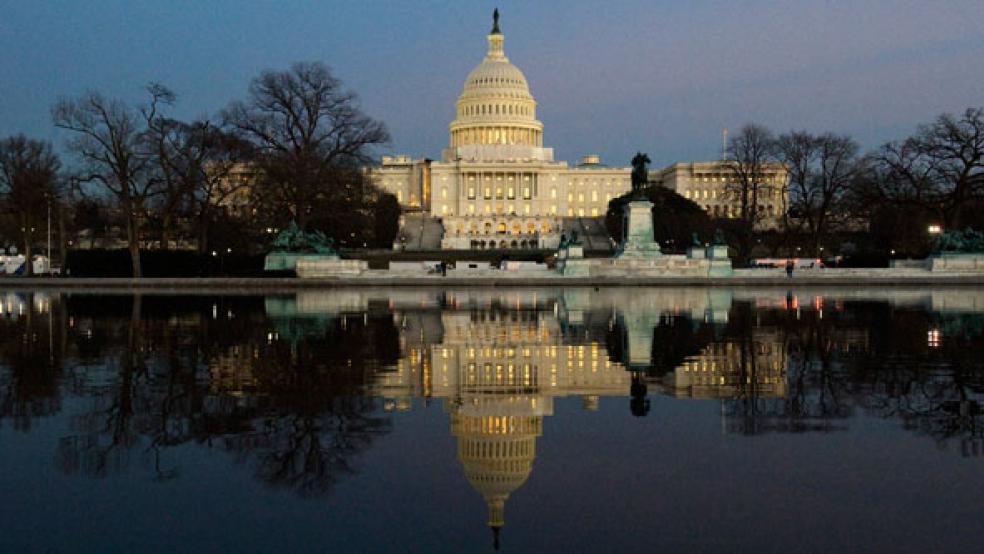First the good news. The economy will grow at “a solid pace” in 2014 and for several years thereafter following a frustratingly slow recovery from the Great Recession, according to a new Congressional Budget Office report issued Tuesday.
As part of its latest Budget and Economic Outlook for 2014 to 2024, CBO said that real Gross Domestic Product adjusted for inflation will increase by about 3 percent between the fourth quarter of 2013 and the fourth quarter of 2014. That would constitute the largest rise in nearly a decade, according to the analysis.
Beyond 2017, however, there’s bad news. CBO expects economic growth will diminish to a pace well below the average seen over the past several decades. The agency projects an annual average growth rate of only 2.2 percent through 2024.
That projected slowdown mainly reflects long-term trends—particularly, slower growth in the labor force because of the aging of the population. The baseline budget outlook has worsened slightly since May 2013, when CBO last published its 10-year projections. The agency has reduced its projections of total revenues by $1.6 trillion, largely because of changes in the economic outlook.
CBO’s current economic projections differ in some important respects from the projections it issued in February 2013. In particular, projected growth of real GDP is now lower in each year than it was last February, and the projected level of real GDP in 2023 is 2 percent lower.
Related: Sharing the Gains from Economic Growth
The Commerce Department reported last week that the economy grew at a 3.2 percent annual rate in the October-December quarter on the strength of the strongest consumer spending in three years, an encouraging sign for 2014. The fourth-quarter increase followed a 4.1 percent growth rate in the July-September quarter, when the economy was boosted by a buildup in business stockpiles. By contrast, the economy grew at a tepid 1.9 percent for all of 2013.
The non-partisan CBO projected similar 3 percent annual growth rates through 2017. However, CBO estimates that the economy will continue to have considerable “slack”—or unused labor and capital resources—for the next few years.
Economic forecasting is a hazardous business – especially when analysts attempt to predict outcomes years down the road. As the CBO report cautions: “The economic recovery has had unusual features that have been hard to predict, and the path of the economy in coming years is also likely to be surprising in various ways.”
Related: Senate Will Try Again to Extend Unemployment Insurance
CBO analysts expect the unemployment rate—now 6.7 percent—to continue to decline, although it will remain above 6 percent until late 2016. The unemployment rate has fallen in recent times largely because discouraged Americans are dropping out of the workforce all together.
What’s more, the rate of participation in the labor force is projected to move only slowly back toward what it would be without the cyclical weakness in the economy.
Inflation—as measured by the change in the price index for personal consumption expenditures (PCE)—will remain at or below 2 percent throughout the next decade, according to CBO.
Related: What Rising Interest Rates Will Cost You in 2014
Interest rates on Treasury securities, which have been exceptionally low since the recession, are estimated to increase in the next few years as the economy strengthens and projected to end up at levels that are close to their historical averages when adjusted for inflation.
This article was updated at 2:21 p.m.
Top Reads from The Fiscal Times:





